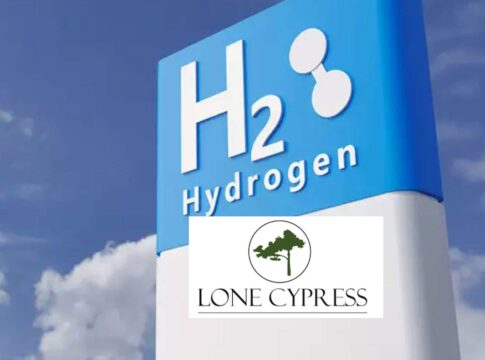The World Is Getting Too Warm, Too Fast
According to NASA, the global average temperature has risen 0.89 degrees Celsius by 2022 compared to the 1950’s – accelerating sharply after the 1980s.
In fact, global temperatures recently hit their highest daily average ever recorded in July 2023 – reaching 17.24 degrees Celsius.
Such extreme global temperatures have brought on heatwaves, wildfires, and heavy rainfalls worldwide, causing havoc.
According to the international think tank – The Institute for Economic and Peace (IEP) – climate migration is expected to surge in the coming decades, with projections that 1.2 billion people may be displaced globally by 2050 due to a warming climate.
Because of this staggering rise in climate temperatures, governments around the world are just now beginning to make up for lost time by piling on new policies – regardless of the costs – to prevent further climate change disruptions.
In the previous year, President Biden issued an executive order aiming to reduce emissions by 65% by 2030, with the ultimate goal of achieving a net-zero U.S. economy by 2050. Additionally, 24 U.S. states, accounting for 40% of the entire economy, have established their own net-zero objectives.
The European Union has committed to achieving net-zero emissions by 2050 and recently introduced additional measures, including a proposal to eliminate 90% of carbon dioxide (CO2) emissions from the trucking and public transportation sector by 2040.
China, a substantial contributor to emissions, publicly declared in mid-2022 its ambition to reach net-zero status by 2060. To realize this objective, the country has outlined a concrete three-step roadmap.
Even though this is a huge step in the right direction, albeit a bit too late amid record breaking temperatures, there’s still much more that needs to be done for governments to hit their ambitious net-zero targets in the coming years.
According to McKinsey, the U.S. must cut emissions by 6% per year – which is roughly 10-times faster than the last decade’s average annual reduction – to hit their 2030 targets alone. That’s a 50% reduction over the next eight years.
Governments Are Putting Money Where Their Mouth Is
Since governments around the world are starting later than they should have, they’re trying to make up for it by doling out trillions to get the clean energy infrastructure built out, as well as subsidizing households, to transition faster to cut greenhouse gas emissions.
Between 2020 and April 2023, global government clean energy support has risen 10-fold – and energy affordability spending has risen nearly 4-fold.
For instance, President Biden’s Inflation Reduction Act (IRA) contained nearly $400 billion in energy and climate provisions – including tax-credits for electric vehicles (EVs) and clean energy projects.
And this has revitalized hydrogen in becoming a key power source, which will be crucial in the race against climate change.
In fact, the White House made waves recently by announcing a historic $7 billion funding program by the Department of Energy to help spur regional clean hydrogen hubs across the entire nation.
The Macquarie group claims that President Biden has “almost guaranteed green hydrogen’s future” as a major energy source.
And this is just in the U.S.
On the other side of the world, Europe implemented it’s EU-wide Hydrogen Strategy program in July 2020 to ensure the transition in Europe’s energy mix to reach 13-20% by 2050.
This was followed by the formation of the European Hydrogen Bank in 2022 to fund $3 billion euros worth of support and investments connected to hydrogen market.
“Hydrogen is today enjoying unprecedented momentum. The world should not miss this unique chance to make hydrogen an important part of our clean and secure energy future” – said Dr Fatih Birol, Executive Director at the International Energy Agency (IEA).
As the push for cleaner, zero-emission, fuel sources have become government priorities, hydrogen demand is set to play a crucial role.
From transportation and industry to powering and heating homes.
So as the race against climate change finally ramps up, the hydrogen market is set to grow extremely fast.
And just in time as fuel cell vehicle and green hydrogen product costs have plunged.
Marking the beginning of a new era in fuel cells.
Disclosure: Owners, members, directors and employees of carboncredits.com have/may have stock or option position in any of the companies mentioned: AMLI
Carboncredits.com receives compensation for this publication and has a business relationship with any company whose stock(s) is/are mentioned in this article
Additional disclosure: This communication serves the sole purpose of adding value to the research process and is for information only. Please do your own due diligence. Every investment in securities mentioned in publications of carboncredits.com involve risks which could lead to a total loss of the invested capital.
Please read our Full RISKS and DISCLOSURE here.
The post The World Is Getting Too Warm, Too Fast appeared first on Carbon Credits.



